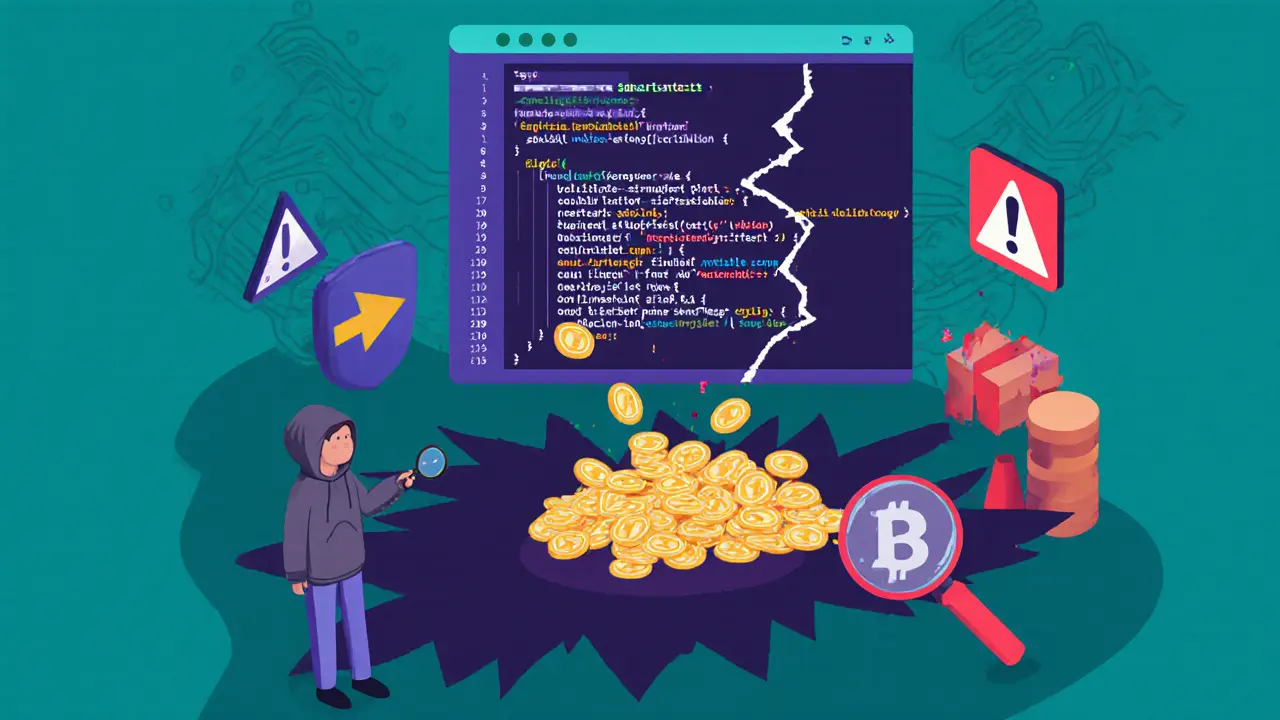Blockchain Vulnerabilities: Common Flaws, Real-World Risks, and How to Avoid Them
When you hear blockchain vulnerabilities, flaws in decentralized systems that can be exploited to steal funds, freeze assets, or break trust, you might think of hackers in hoodies. But the real dangers are often built into the code itself—like a locked door with a hidden key. smart contract errors, bugs in self-executing code that run without human oversight have drained over $3 billion since 2017, not from outside attacks, but from mistakes developers didn’t catch before launch. These aren’t glitches—they’re design failures. And they show up in places you’d never expect: zero-fee DEXs with no liquidity, privacy chains that leak data, or tokens that claim to be immutable but can’t even be corrected after a crash.
Then there’s the myth of immutable data, the idea that once something is on a blockchain, it can never be changed. It sounds secure, but in practice, it’s a liability. GDPR in Europe forces companies to delete personal data—yet blockchain doesn’t let you. When a smart contract goes wrong, like the one behind Landboard’s dead token or the SMAK airdrop that vanished, you can’t undo it. You’re stuck with a broken system that no one can fix. And when platforms like Zeddex or Darkex claim to be decentralized but hide their team, skip audits, and show zero trading volume, you’re not using a blockchain—you’re gambling on a black box.
Most people don’t realize that decentralized exchange risks, the hidden dangers of using DEXs without proper liquidity, audits, or user verification are often worse than centralized ones. Why? Because you can’t call customer service when your funds disappear. You can’t ask for a refund. You’re on your own. That’s why PancakeSwap V3 works—it has real liquidity, clear fees, and public data. But most new DEXs? They’re built for hype, not safety. The same goes for airdrops. THN, KCCPAD, SMAK—they all promised free tokens, but none delivered real value. They exploited trust, not technology.
Blockchain isn’t magic. It’s code. And code has bugs. The most dangerous vulnerabilities aren’t the ones you can see—they’re the ones you assume are fixed. Immutability doesn’t mean safety. Decentralization doesn’t mean secure. Zero fees don’t mean trustworthy. What you need to know isn’t how blockchain works—it’s where it breaks. And the posts below show you exactly that: real cases, real losses, and real lessons from platforms that failed, scams that fooled thousands, and projects that survived because they avoided these traps. You won’t find fluff here. Just what happened, why it happened, and how to make sure it doesn’t happen to you.
Code Review Best Practices for Blockchain: How to Prevent Costly Vulnerabilities
Learn the essential code review practices for blockchain to prevent costly vulnerabilities. Discover why manual review is irreplaceable, how to use automated tools effectively, and what separates a secure contract from a disaster.
Details +